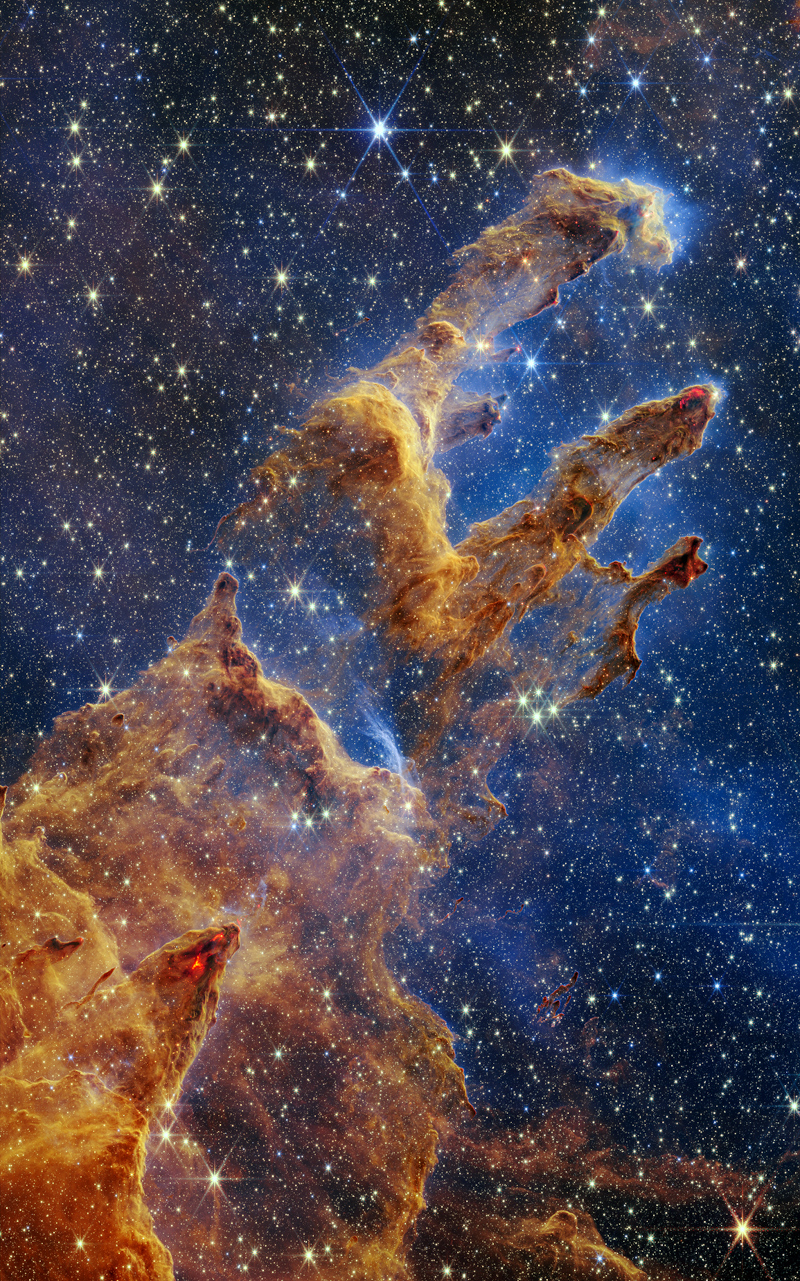2022年10月20日
Pillars of Creation
Image Credit: Science – NASA, ESA, CSA, STScI, NIRCam
Processing – Joseph DePasquale (STScI), Anton M. Koekemoer (STScI), Alyssa Pagan (STScI)
Explanation: A now famous picture from the Hubble Space Telescope featured these star forming columns of cold gas and dust light-years long inside M16, the Eagle Nebula, dubbed the Pillars of Creation. This James Webb Space Telescope NIRCam image expands Hubble’s exploration of that region in greater detail and depth inside the iconic stellar nursery. Particularly stunning in Webb’s near infrared view is the telltale reddish emission from knots of material undergoing gravitational collapse to form stars within the natal clouds. The Eagle Nebula is some 6,500 light-years distant. The larger bright emission nebula is itself an easy target for binoculars or small telescopes. M16 lies along the plane of our Milky Way galaxy in a nebula rich part of the sky, toward the split constellation Serpens Cauda (the tail of the snake).
Tomorrow’s picture: andromeda in southern skies
创生之柱
影像提供: Science – NASA, ESA, CSA, STScI, NIRCam
影像处理 – Joseph DePasquale (STScI), Anton M. Koekemoer (STScI), Alyssa Pagan (STScI)
说明: 在目前已是众所皆知,以鹰状星云(M16)内的这些长达光年、会形成恒星的冷气体及尘埃柱为主题之哈勃太空望远镜影像里,它们称为创生之柱。这张韦伯太空望远镜的近红外相机影像,接续哈伯望远镜为这个标志性的恒星育婴室所进行的探索工作,作了更详细和深入的探勘。在韦伯的近红外光影像里,特别令人赞叹的是能孕育恒星的云气之内,正在经历重力塌缩形成恒星的物质结所发出的特征性泛红辉光。老鹰星云距离我们约6,500光年。其四周更大范围的明亮发射星云,则是双筒望远镜及小型望远镜轻易可见的目标。 M16位于我们银河系的盘面上,座落在分叉的巨蛇座方向满布星云之天空中。
明日的图片: andromeda in southern skies







